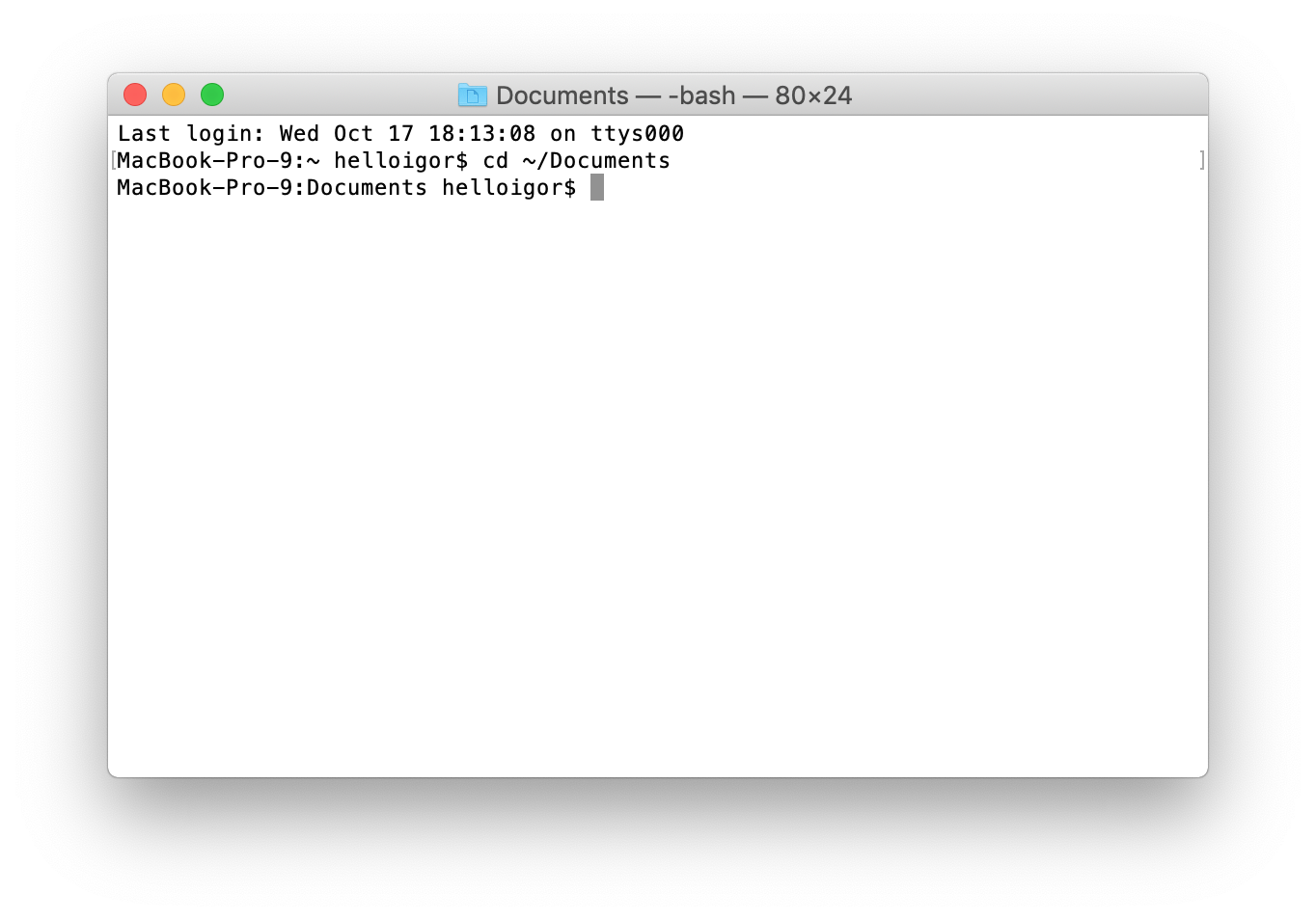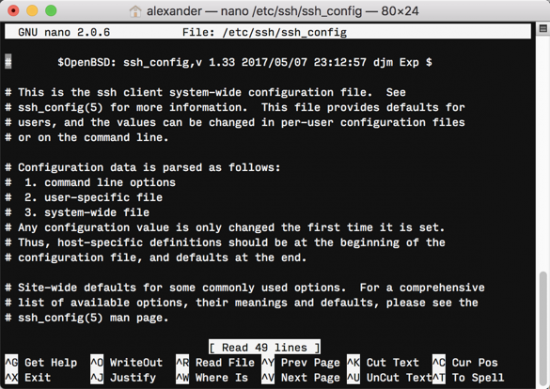How to change the date modified attribute of a file? Follow the given below simple steps to change the date modified attributes of a file on MAC: a: Open up the Terminal application: It is a simple activity where you just have to highlight the 'Applications' from the 'Places' list, on the left side of the opened Finder Window. Steps are as follows: 1. Type mv then open Finder and drag the file on terminal (this is to copy the full path of file to the terminal) Note: Please do note that while dragging the file to terminal, make sure that the finder window and terminal window don't overlap else this trick won't work.
Convert rich text documents to other formats
With TextEdit, you can open and edit rich text documents created in other word processing apps, including Microsoft Word and OpenOffice. You can also save your documents in a different format, so they're compatible with other apps.
Edit File In Terminal Mac Os
Create and edit HTML documents
It can edit text files such as /etc/cups/mime.convs in a GUI environment with menus and all the stuff you are used to. If you really want to use vi then try:wq as in: says use an ex command, w says write, q says quit. NOTE: I love vi/Vim as a text editor. I get paid a lot of money to write code, and vi/Vim is my preferred editor. If you wish to edit the file in TextEdit, then you can do so by using the 'open' command in the following manner: open -e /path/to/file. The 'open' command acts just as if you had double-clicked the file in the Finder, where the 'default' program will be used for opening the file.
You don't need a special app to write or edit HTML code—just use TextEdit. You can display HTML documents like you'd see them in a browser, or use TextEdit as a code editor.
Mark up images
You can write or draw on images in your text files using the tools in the Markup toolbar.
To explore the TextEdit User Guide, click Table of Contents at the top of the page, or enter a word or phrase in the search field.
I use batch files sometimes when I was using Windows because it saves a lot of time when you need to run a batch of commands frequently. With a batch file, you save all the commands into one file, and just run the batch file, instead of your gazillion commands individually. Adobe reader 8 or higher for mac.
I was facing the same situation in Mac OSX when I realised that I didn't know how to create a batch file in Mac OSX. Turns out it's pretty easy. Mac OSX is unix-based, so I could use the unix equivalent (which is called a script too). What you need to do is to put all the commands you want into a plain text document, and save it with a name (without the .txt extension preferably, but that really doesn't matter…it just looks more right that way).
In Windows, that's all that you need to do, but for the Mac, you'll need to make sure that you edit your batch file's permissions so it is executable. So for example, if your batch file is named batchfile, one way to change its permissions is to right-click on it, click on 'Show Info', and then change the permissions under 'Permissions' to show 755.
What 755 does is to give permissions of 7 to you, 5 to your user group, and 5 to everyone else. With a permission of 7, you can write to the file and execute it. With a permission of 5, you can execute the file but not write to it.
Another way is for you to change permissions of the file is to go into Terminal, and enter this command that changes its permissions. You'll need to be in the directory that batchscript is in for the following command to work (or you'll need to specify its full path):
How To Edit File In Terminal Mac

chmod 755 batchscript
Now to run your batch file, you just need to either specify the full path to the batch file, or if you are already in the directory where it is located, you can type:
./batchscript

chmod 755 batchscript
Now to run your batch file, you just need to either specify the full path to the batch file, or if you are already in the directory where it is located, you can type:
./batchscript
Note that you have to put the './' in front of your filename, in order to tell Terminal to look for the file in the current directory.
Edit File In Terminal Machine
And with that, you'll have a working batch file in Mac OSX!
